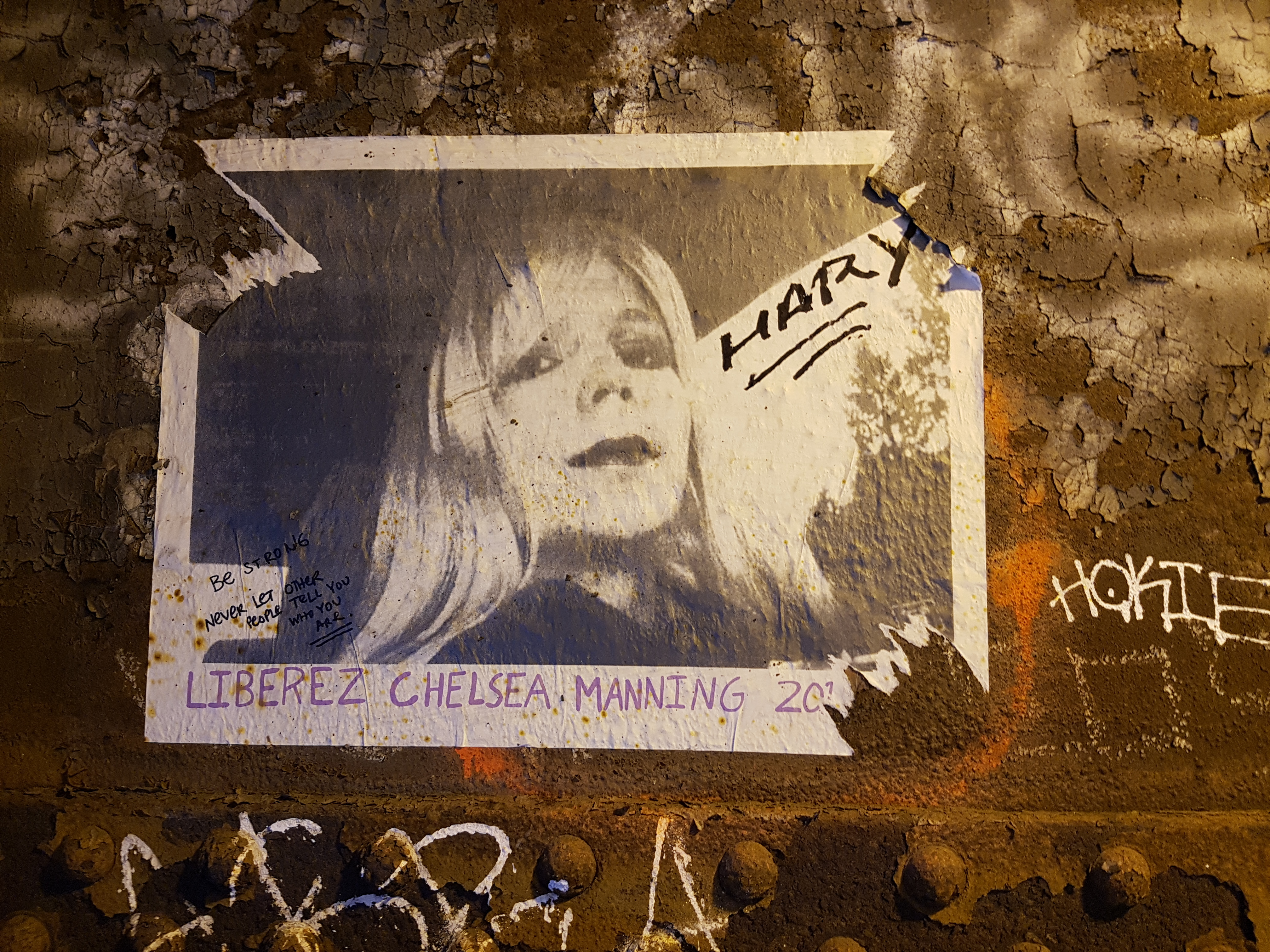An Unbalanced Biography of the Espionage Act
A review of Ralph Engelman and Carey Shenkman, “A Century of Repression: The Espionage Act and Freedom of the Press” (University of Illinois Press, 2022).

Published by The Lawfare Institute
in Cooperation With

A review of Ralph Engelman and Carey Shenkman, “A Century of Repression: The Espionage Act and Freedom of the Press” (University of Illinois Press, 2022).
***
The unfettered flow of information via a free press is essential to the workings of American democracy. Without an understanding of what the government is doing in its name, the public is deprived of an essential prerequisite for sound choice at the ballot box. But at the same time, in the conduct of statecraft, American democracy has a compelling need to protect its diplomatic and military secrets. When those secrets are illicitly disclosed to the press, providing critical intelligence to the nation’s enemies, the public interest is ill served. In a democracy, openness and secrecy are in profound tension with one another.
One of the key instruments by which the U.S. government protects its secrets is the Espionage Act of 1917, enacted amid the turmoil of World War I. In its 105-year history, it has proved highly controversial. Ralph Engelman, a professor emeritus of journalism at Long Island University, and Carey Shenkman, a constitutional lawyer, have published what they call a “biography of the law.” As their title, “A Century of Repression,” makes plain, they are harsh critics, seeing the act as a “powerful weapon against freedom of expression for dissidents and whistleblowers.”
Engelman and Shenkman tell the life story of the Espionage Act chronologically. As the United States entered World War I, the country lacked a comprehensive legal framework to punish spying and to control government secrets: hence, the legislation, which not only dealt with traditional spying but also criminalized the unauthorized possession and dissemination of information pertaining to the national defense.
As dissent against American participation in the war surged, Congress, at Woodrow Wilson’s behest, enacted amendments to the original Espionage Act to proscribe, among other things, “disloyal, profane, scurrilous or abusive language” about both the war effort and the American system of government. With its draconian punishments for mere expression, the Sedition Act of 1918, as the amendments were called, led to a number of infamous prosecutions such as that of the socialist leader Eugene Debs, sentenced to 10 years in prison for impeding the war effort. Numerous small fish were also caught up in its strictures and sentenced to long terms of incarceration for things like simply handing out leaflets. With the end of the war, the Sedition Act was widely recognized as an overstep. The amendments were repealed in 1920, but the Espionage Act, according to Engelman and Shenkman, would nonetheless remain on the books as “a vehicle for government suppression of information and criticism regarding U.S. foreign and military policies for the century that followed.”
The advent of World War II saw the Espionage Act in action once again. Engelman and Shenkman tell us that it was used to badger the Black press and also to threaten a “mainstream” publication, the Chicago Tribune. In the Cold War, things got even worse. The act was employed in “unprecedented ways” to “inhibit dissent,” and it “assume[d] increasing centrality in controlling access to government information.” They point to a now-forgotten episode in which three individuals connected to the pro-communist journal Amerasia (along with three government officials) were arrested in June 1945 for the unauthorized removal and possession of government documents. The Amerasia affair, in their words, was a “harbinger of new ways the law would be deployed to maintain government secrecy and inhibit dissent over U.S. foreign and military policies in the second half of the twentieth century.”
The controversy surrounding the Espionage Act came to a full boil in 1971 thanks to the massive leak of Vietnam War documents by former Department of Defense official Daniel Ellsberg. In close detail, Engelman and Shenkman reprise the Pentagon Papers episode, the most sensational case that has ever been brought under the act. They conclude, quoting the magisterial Columbia Law Review study of the law by Harold Edgar and Benno C. Schmidt Jr., that the Supreme Court ruling left the Espionage Act a “loaded gun pointed at newspapers and reporters who publish foreign policy and defense secrets.”
Remarkably enough, it was only in 1985, under Ronald Reagan, that the first leaker was actually convicted under the act and sent to prison: Samuel L. Morison, grandson of the distinguished naval historian Samuel Eliot Morison, who as an employee of the Naval Intelligence Support Center in Suitland, Maryland, passed secret satellite photos to the publication Janes Fighting Ships. At the behest of Sen. Daniel Patrick Moynihan, Morison was pardoned by Bill Clinton in January 2001. Engelman and Shenkman note the curious—and bizarre—fact that at age 70, Morison proved a recidivist and was arrested and convicted for stealing the papers of his grandfather from the Naval History and Heritage Command in Washington, D.C.
Counter to what one might expect, it has only been in the 21st century, particularly under the Obama administration, that the Espionage Act has been seriously exercised: A flood of leak prosecutions has followed an almost century-long drought. Engelman and Shenkman review them all in some depth—the notorious AIPAC prosecution, the cases of Thomas Drake, John Kiriakou, Stephen Jin-Woo Kim, and Jeffrey Sterling, among others—before turning to the two mega-leakers of the era: Chelsea Manning, who is portrayed as a martyr to the cause of free expression, and Edward Snowden, who is characterized as a “staunch patriot.”
How should one evaluate Engelman and Shenkman’s “A Century of Repression”?
One significant problem is encapsulated by the title. The idea that the Espionage Act ushered in a century of repression is preposterous and never even remotely demonstrated in the pages of their book. Putting aside the truly egregious prosecutions that occurred under the Sedition Act more than a century ago, between 1918 and 1920, the overwhelming evidence points in the other direction. The Espionage Act may be a loaded gun pointed at the press—but that gun has never been fired. Over the supposed century of repression, exactly zero journalists have been tried and convicted for violating the law. Even under the Trump administration, with the president labeling the press the “enemy of the people” and instructing his FBI director to jail journalists for publishing leaks, the act was not deployed. (The indictment of Wikileaks proprietor Julian Assange remains in abeyance pending his extradition from Great Britain, and it is questionable whether he is a journalist or something else entirely, though the implications of the case for journalism are indeed worrisome.)
The closest we have come to an actual prosecution of the press is the case of the Chicago Tribune, which in 1942, at the height of the war in the Pacific, published an account of the battle of Midway that made plain that the U.S. had broken Japanese codes. Ultimately, to avoid drawing attention to the story and tipping off the Japanese, charges were not brought against the paper’s publisher and journalists.
Engelman and Shenkman hold up the case as an example of Franklin D. Roosevelt wielding the act as a “weapon against a political enemy,” explaining that the “abortive Tribune prosecution … pointed to disturbing new uses of the Espionage Act.” First, FDR demonstrated the potential “for a president to employ the act against a politically hostile publisher like McCormick,” an isolationist and political enemy of the president. And second, “Roosevelt threatened a major mainstream publication, expanding the range of targets beyond the dissidents of WWI.”
This is a seriously unbalanced judgment. McCormick’s Tribune had behaved with extraordinary recklessness in wartime at a moment of supreme national danger. The ultra-secret information the newspaper disclosed, had the Japanese paid attention and changed their codes, would have blinded the U.S. to Japanese war planning and likely prolonged World War II by years, sending countless soldiers and civilians to their deaths. Prosecution of the paper’s proprietor and the journalists responsible for the transgression, if imprudent under the circumstances, would nonetheless have been amply justified. Engelman and Shenkman never confront, never even discuss, the potential costs of the Chicago Tribune’s outrageous behavior.
Engelman and Shenkman also make much of the fact that under Franklin Roosevelt, the FBI under J. Edgar Hoover leveled “threats to employ the Espionage Act against Black newspapers during WWII.” This allegation is deeply misleading. The FBI and the Department of Justice did indeed contemplate going after the Black press in unseemly ways. But they were weighing the use of other instruments entirely: wartime censorship rules, and the subversion and sedition laws. Although there was occasional internal discussion of the Espionage Act’s possible applicability to this or that conduct, there were no actual “attempts” to use the act as a “weapon”—Engelman and Shenkman’s words. The Espionage Act already has a bad reputation; the authors blacken it further baselessly.
As for the Amerasia affair, far from being an instance of the Espionage Act deployed to “inhibit dissent,” as the authors put it, it bore the hallmarks of a traditional spy case, albeit with a peculiar First Amendment wrinkle. Among other things, Philip Jaffe, the owner of the publication, was caught on wiretap pondering whether he should provide U.S. government secrets directly to the Soviets or keep publishing them in Amerasia, which accomplished the same objective with far less risk. That is a significant detail that the authors do not provide but that can be found in the definitive account of the affair by Harvey Klehr and Ronald Radosh, “The Amerasia Spy Case,” a volume with which the authors are clearly familiar as they cite it extensively in their text and footnotes.
When Engelman and Shenkman turn to the spate of recent cases, they are no more trustworthy. They seem to believe that anyone who leaks information, proclaiming himself a whistleblower, is a hero, no matter their motivation and no matter how grave the damage done to U.S. national security.
It is true, to take one prominent example, that in his mega-leaking Edward Snowden brought to light what many observers judge to be an illegal National Security Agency surveillance program. But along with that contribution to the public weal, through his blanket disclosures he also exposed numerous other highly sensitive intelligence secrets for no public benefit at all, seriously undermining the efforts of the U.S. government to meet a range of dangerous threats. Taking refuge in Vladimir Putin’s Russia, Snowden, who regularly lambastes the United States from afar, has maintained a less-than-courageous silence about the Kremlin’s repression and aggression. Indeed, as the war against Ukraine rages, he has opted to take Russian citizenship. This posture hardly comports with Engelman and Shenkman’s description of him as a devoted civil libertarian and “staunch patriot.” Indeed, the negative side of Snowden’s behavior is entirely absent from their book. At a bare minimum, a balanced view would begin by recognizing the serious and perhaps unresolvable tension between the necessity of protecting secrets and the imperatives of transparency, and that in cases involving self-proclaimed whistleblowers, that tension comes to the fore.
In closing their book, Engelman and Shenkman take up proposals to reform the Espionage Act. This is laudable. The law is riddled with ambiguities, and worse: Edgar and Schmidt characterize it as “in many respects incomprehensible.” Sensibly, Engelman and Shenkman propose enacting separate statutes for traditional espionage and for unauthorized disclosures of classified information, a step that would clear up a lot of confusion. Former President Donald Trump may have violated the Espionage Act by hoarding top-secret documents at Mar-a-Lago, but he did not thereby commit “espionage” (unless, of course, it turns out that he disclosed information in the documents to a foreign power). Engelman and Shenkman also propose creating a “public-interest” defense to the crime of leaking. This has superficial appeal but is a bad idea as it would entail mini-trials within trials in which juries would be asked to determine what constitutes the public interest, an inherently political question that in a democracy belongs in the hands of voters and the officials they elect, not jurors.
All told, the authors of “A Century of Repression” deserve applause for their ambition to chronicle the history of the Espionage Act. Unfortunately, writing in a partisan vein and neglecting to put forward countervailing opinions—and even in some instances neglecting to put forward countervailing facts—they have produced a “biography of the law” that, if the Espionage Act were an actual flesh-and-blood person, would be found slanderous. Along the way, groundlessly asserting that the United States has a century-long history of repression, including the suppression of “dissidents”—a word borrowed from a totalitarian context but meaningless here—they also slander their own extraordinarily free country.




